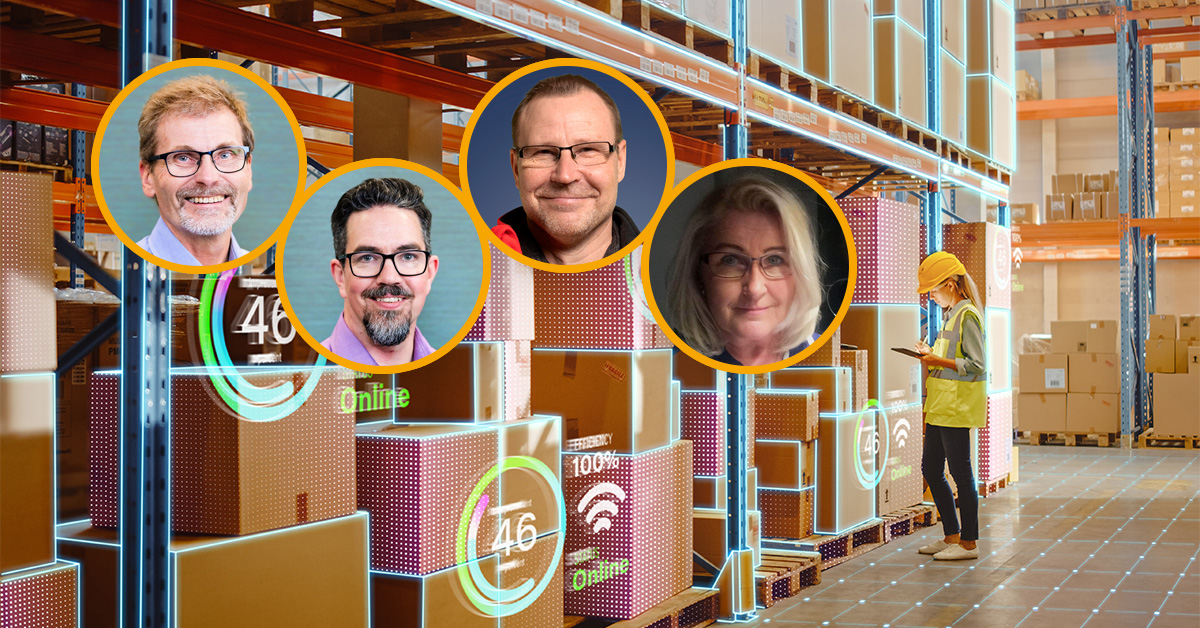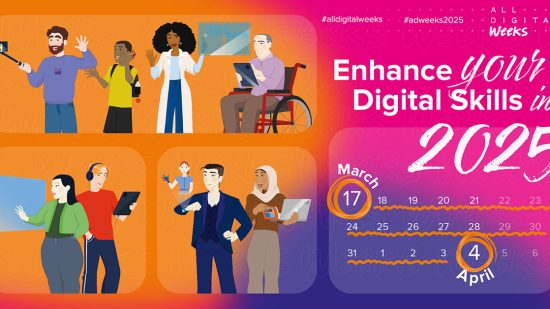
Logistics is linked to many other sectors through supply chains. And to manage supply chains effectively, digital technology and data are needed.
Nowadays, digitalisation plays a key role in logistics – and because of this, logistics companies should improve their digital skills. Logistical processes in which goods are received, shelved, stored, moved, collected and dispatched are a part of operations in a wide range of companies in many different industries. This makes digitalisation essential also for companies that are not directly involved in the logistics sector.
If the importance of digitalisation and data and the efficiency it can offer is ignored in the logistics sector – or in companies with logistics processes – the result may be missed opportunities and unnecessary risks to a company’s business and competitiveness. This is why TIEKE works closely with logistics companies to improve their digital skills and ability to use data effectively.
Logistics under regulatory pressure
In recent years, regulatory developments have increased the pressure for digitalisation in the logistics sector. Businesses must be ready to meet the new requirements, and without the ability to process data electronically they cannot comply with legislation.
The LogDigiS project by TIEKE and LAB University of Applied Sciences is an example of projects that help logistics companies develop their digital capabilities and meet the challenges of changing legislation.
TIEKE also works closely with the Finnish Transport and Communications Agency Traficom and the Ministry of Transport and Communications to develop the digitalisation of logistics nationwide. This will ensure that businesses in the sector always receive current information on regulatory impacts and related requirements.
National development work is also being done on the Peppol system and the standardisation of data content. They are good examples of how digital systems can be made more interoperable, and how data can be used more effectively at different stages of the supply chain.
Data capabilities in the logistics sector vary widely – pioneers are scarce
The current state of digitalisation in the logistics sector in Finland is very varied. According to advisor Jari Salo and data specialist Jussi-Pekka Parkkari of TIEKE, there are some pioneers in the field, but many companies, especially smaller ones, are only about to begin their digitalisation journey. This difference is also reflected in how effectively data is used.
“There are companies that are well advanced in digitalisation, but also those that are trying to avoid digital systems,” says Salo.
Parkkari points out that although all companies are digitalised in one way or another, there are few pioneers.
“Many companies in the logistics sector use electronic systems, for example for managing orders and handling freight documents, but the level of IT systems varies considerably.”
Competitiveness depends on understanding the current state of digitalisation
The importance of digital skills cannot be overemphasised, as digitalisation helps companies to become more efficient, reduce errors and improve competitiveness.
“It’s important for a company to understand its current digital level in order to assess itself against its competitors.”
Jussi-Pekka Parkkari, TIEKE
This applies to small businesses and large operators alike. Maintaining competitiveness requires continuous development and the ability to adapt to the changing environment.
DHL Supply Chain (Finland) Oy’s Health and Safety, Environment and Security Manager Vesa Korhonen gives concrete examples of how digitalisation has improved the efficiency of their company’s logistics operations.
“We have robotic forklifts that automate the collection processes, and we use scanners instead of manual paper documents. This not only speeds up deliveries, but also improves safety at work and reduces errors.”
Wellbeing at work and digitalisation go hand in hand
In addition to business efficiency and productivity, digitalisation improves well-being at work, too. As Jaana Lerssi-Uskelin from LAB University of Applied Sciences points out, the successful implementation of digitalisation can significantly improve employee well-being.
“If you have sufficient digital skills, they support your well-being at work. If you don’t have the necessary skills, using digital tools can cause stress and strain.”
Jaana Lerssi-Uskelin, LAB University of Applied Sciences
To combine digitalisation and the development of well-being at work, TIEKE and LAB University of Applied Sciences have launched a joint project called LogDigiS. The project will assess the current situation of companies in terms of both digital skills and wellbeing at work and offer solutions to improve both areas.
The project’s holistic approach will ensure that companies can develop their activities in a sustainable and employee-friendly way.
Identifying digital capability is the first step to improving competitiveness
If a company wants to become more competitive, the first step is to identify its digital capability. TIEKE’s services, such as digital capability assessments and various maturity tests, help companies understand their situation and plan their digitalisation.
“Businesses often have weaknesses that are difficult to identify internally, and this is where an external perspective can be useful,” says Salo.
According to Lerssi-Uskelin, the added value of digitalisation is often only visible over a longer period of time.
“Companies must learn how to manage the digitalisation process, ensure they have the right skills and choose the right means of supporting their business.”
TIEKE offers several methods and tools for logistics companies
- Digital capability assessments: Assess your company’s digital skills and identify areas for improvement.
- Maturity tests: A more in-depth analysis of the digital maturity of the company, which can be used to plan development actions.
- Company-specific interviews: Experts help companies identify their weak spots when it comes to digital capability and provide customised solutions.
- Roadmaps: A digital development plan that enables your company to systematically improve its digital capabilities.
- Networks and peer learning: Offers the opportunity to learn from other companies and share best practices through joint meetings and webinars.
- Webinars and digital training: Practical training and materials to support the use of digital technology.
LogDigiS
- The LogDigiS project by TIEKE and LAB University of Applied Sciences promotes digital skills, work well-being and productivity in in-house logistics SMEs.
- The project will help companies develop their digital capabilities and support their staff in adopting digital solutions.
- Participating companies will benefit, for example, from capability assessments, company-specific development plans and peer learning at regional meetings.
- The project is co-financed by the European Union.
Collaborate with TIEKE?
Want to help organizations in themes such as digital competence, data economy, real-time economy, or sustainability? Partner with us!
TIEKE Finnish Information Society Development Centre is a non-profit organisation founded in 1981 aiming to develop, improve and support a thriving information society and all its digital endeavours.
We help organizations in various ways:
- Projects and initiatives
- Networking and ecosystem work
- Surveys and studies
- Expert services and advice
- Webinars, online trainings and coaching programmes
- Materials and guides
We have a track record working in various project roles: coordination, partner, expert, comms and more.
We run around 15 projects per year and are familiar with instruments such as CERV, Erasmus, ERDF and ESF.
We work with wide array of target groups such as SMEs, large companies, educational organizations, public sector and associations.
Don’t hesitate to get in touch to discuss collaboration opportunities with us!









